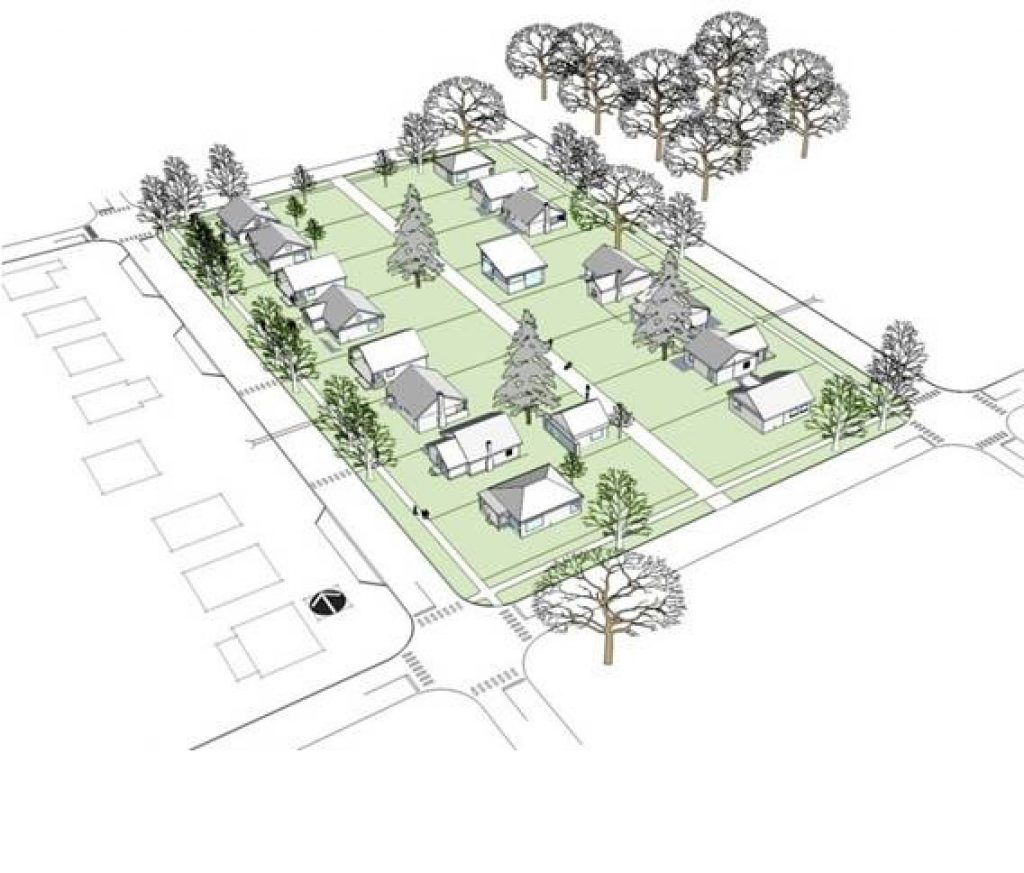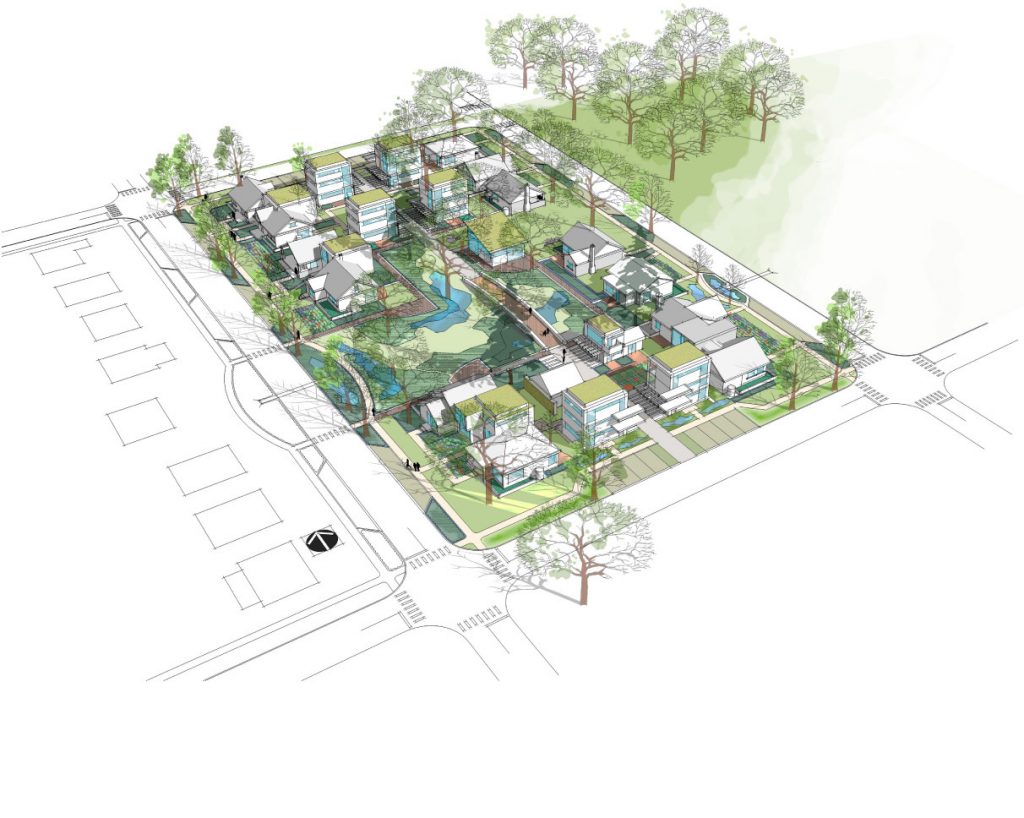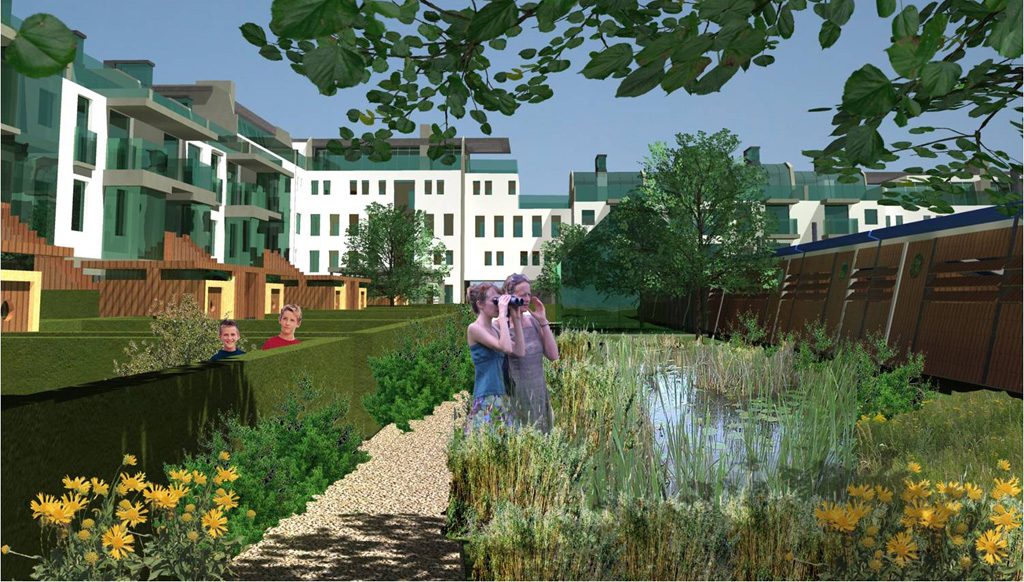Ecological opportunities
National Museum of the American Indian, Washington, DC. ©AECOM Photo By David Lloyd.
Whether urban infill, civil infrastructure, or suburban growth, all projects are superimposed onto an ecosystem and can benefit from a cooperative relationship with natural systems from the site scale to the city scale.
While this idea may sound familiar — a la pioneers like Ian McHarg, author of “Design with Nature” — the practice is rapidly evolving and expanding. Relatively young sciences like landscape ecology, ecological engineering, and climate change science are infusing fresh ideas at a variety of scales and in a variety of contexts. Ecological processes are integral to new trends in urban green infrastructure, climate change planning, and urban planning, even in some of the world’s densest cities.

These renderings illustrate, in the context of Portland, Oregon, the status quo (above) versus an approach that is both twice as dense and ecologically active (below).

No doubt infill is a key sustainability driver, and our experience has shown that integrating ecology can offer these projects many opportunities to become more livable and sustainable, even in the most urban contexts. Using historic, current, and future ecology as a guide, dense infill sites and urban infrastructure can become more water sensitive, cooler (temperature and hip-ness), biodiverse, productive, educational, and kid-friendly.

Greenfield development (development at the urban fringe) undertaken with greater attention to enhancing ecology (not just avoiding it) has an important role in achieving greater sustainability. Despite the widespread view of these lands as more or less pristine and pastoral, they often have substantially degraded ecology and insufficient management to function at their full ecological potential. With the assistance of science- and economics-based ecological performance metrics, we are increasingly seeing evidence that conservation development can actually improve ecological function while providing enriching community environments.
Climate change is another challenge in which ecology is integral to understanding risks and potential solutions. Cascading climate effects like sea level rise, stronger storms, extreme heat events, wildfires, reduced air quality, shifting habitats, and changing watersheds are all leading us to rethink the green infrastructure of our cities and land uses. We are just scratching the surface of understanding this important aspect of sustainable design, and ecology is sure to be at the forefront of future innovation.
In any context, two important questions frame our approach to best leveraging ecosystems: what are the ecological opportunities of the site; and which ones will provide the greatest return in livability and sustainability per cost?






